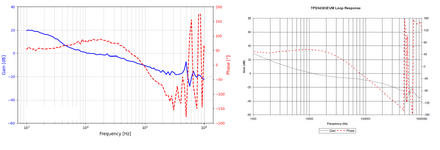Pixelx
Member level 3

Hello,
Is it possible to derive the transfer function G(s) of the tested system based on the studied Bode and Nyquist characteristics of the converter? I mean a mathematical formula that could be used for further analysis. Are there any tools for this or do you have any scripts in which the characteristics (GAIN, phases, freq) can be loaded?
Example of characteristics from the network
Is it possible to derive the transfer function G(s) of the tested system based on the studied Bode and Nyquist characteristics of the converter? I mean a mathematical formula that could be used for further analysis. Are there any tools for this or do you have any scripts in which the characteristics (GAIN, phases, freq) can be loaded?
Example of characteristics from the network




